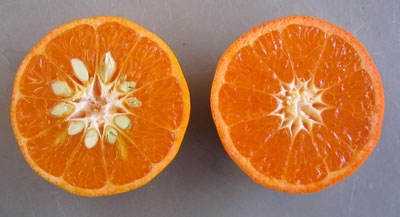UC Blogs
Finally
It's finally here! In spite of the rather mild winter we have had here in Solano County, it's nice to herald the arrival of March and the coming of spring. We are almost ready to close the book on another winter, but we do still have a few more weeks of "official" frost season. That said, it is just so hard to see the daffodils blooming, the blossoms on the flowering trees in my backyard, and not go outside and put in a whole batch of new plants. I am holding off, however, until the official beginning of spring (March 20th this year). After that date, I'm willing to take a gamble and start planting.
This year I have a whole new learning curve to work with. Up until recently, my gardens were full sun for the better part of the day. I have three flowering plum trees ('Krauter Vesuvius') in my garden that have been growing larger every year. Last summer, I noticed several roses, pineapple sage, society garlic, and coreopsis 'Moonbeam' were trying to reach for more sunlight, and it dawned on me that they were receiving more shade than sun. Now I am having to decide what to move, what to shovel prune, and what to plant in shade. I never had to shop for shade plants, and now here I am, researching and planning a whole new garden!
I am actually a little excited about some of the plants I have found. Camellias, columbines, Chinese lanterns, Japanese maples, liriope, bleeding heart are just a few of the plants I've never grown before and now have the opportunity to do so. We are so fortunate to have the resources offered to us on the California Garden Web (www.ucanr.org/sites/gardenweb) for gardening in the Golden State.
It just goes to show you that a gardeners work is never done!
'A' Is for Almonds
Bee specialists Neal Williams and Eric Mussen of the UC Davis Department of Entomology are among those quoted in a comprehensive news story, "Hives...
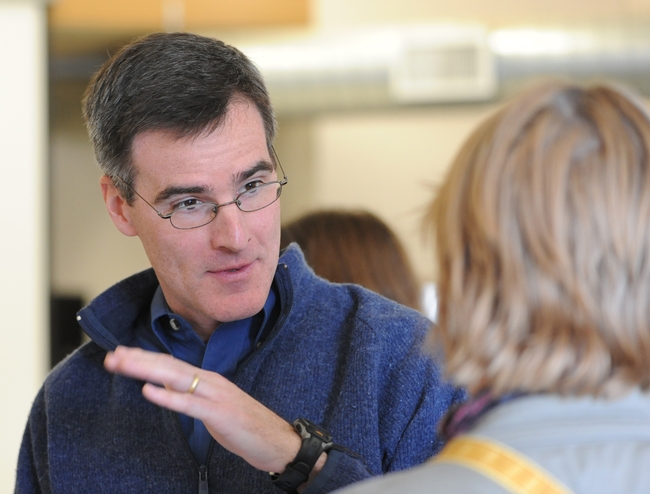
Neal Williams discusses native bees at a recent conference in Woodland. (Photo by Kathy Keatley Garvey)
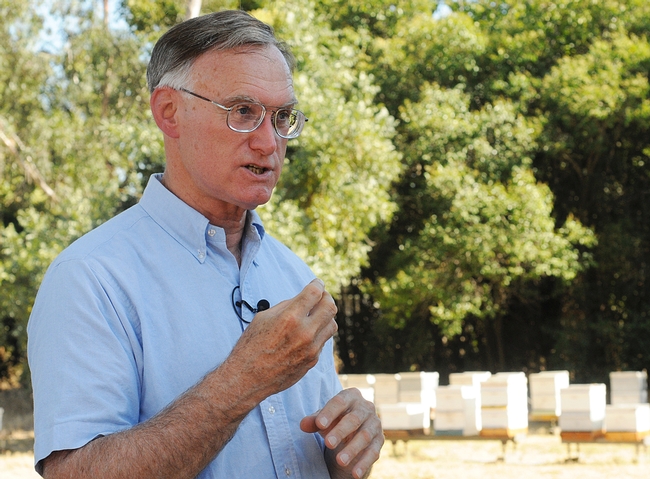
Extension apiculturist Eric Mussen at the Harry H. Laidlaw Jr. Honey Bee Research Facility, UC Davis. (Photo by Kathy Keatley Garvey)
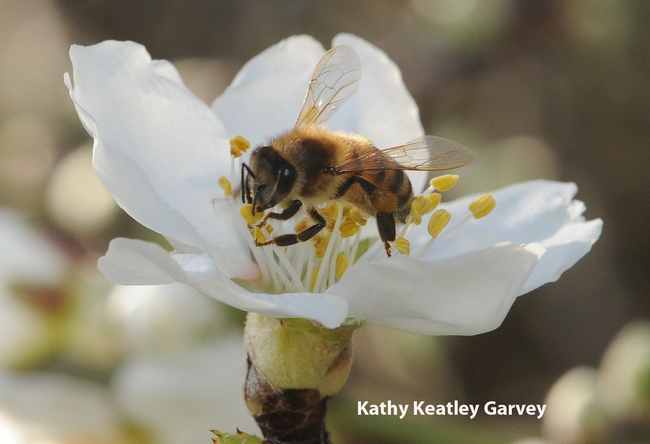
Honey bee working an almond blossom at UC Davis. (Photo by Kathy Keatley Garvey)
Turf Tidbits
March is a great time to rehabilitate your lawn by filling in bare patches with seed. The spring season offers temperatures moderate enough to foster new growth through germination of turf seeds, but it remains cool enough not to stress new grass once it begins growing and allows it time to mature and take root.
The issues to consider before you start your lawn rehabilitation job are to note the type of turf that already exists in your space so that you can get a matching blend, the amount of sun and shade the particular area might get, and the amount of water the area gets so that you get the proper seeds for your needs The materials you will want to have for the tasks are a rake, a shovel, a bag or two of topsoil made from organic matter, high quality turf seed, starter fertilizer, and a hand-watering container.
The first order of business is to isolate the area you are working on from any pets or foot traffic because turf seeds and seedlings are delicate and will be ruined by even light trampling. Secondly, you want to clear the area of any old dead turf or other dead or dying matter covering the ground you are going to work on. Once the area is cleared up and ready, you will want to dig down about 4 to 6 inches and till the soil until it is soft and workable and all of the large clods have been broken up. You will rake the area so that the ground is even with the other areas where grass is already growing and all of the dirt is uniform in size and texture and elevation. Next, generously spread the turf seed in the area you have prepared making sure to slightly overspread seed on the edges as evenly as possible. Finally, you will cover the seed with about an inch of topsoil which will thin out once you add water. You should not be able to see any seeds through the topsoil; at the same time you are not trying to bury the seeds any deeper than just under the surface of the soil. Once all of the topsoil has been uniformly applied and the seeds are completely covered you will very gently water the area trying to apply the watering as delicately as possible to prevent erosion of the work you just did.
You will want to inspect the area twice a day for 2 weeks to make sure that the seeds continue to maintain minimal moisture content. You want to keep the topsoil slightly moist constantly until you notice baby turf emerging. Once the new grass begins to grow you will want to scale the watering back to allow the new turf to establish its roots. A watering balance is needed at this point, you want to water thoroughly and then allow the grass to dry out almost completely before the next application of water. A starter fertilizer should be applied at this time also to encourage mature rooting and growth. You will want to closely consult the directions on the seed packaging to check for varying details. (NOTE: the Master Gardener program does not endorse the Kellogg's or Scott's products, these photos are for demonstration purposes only)
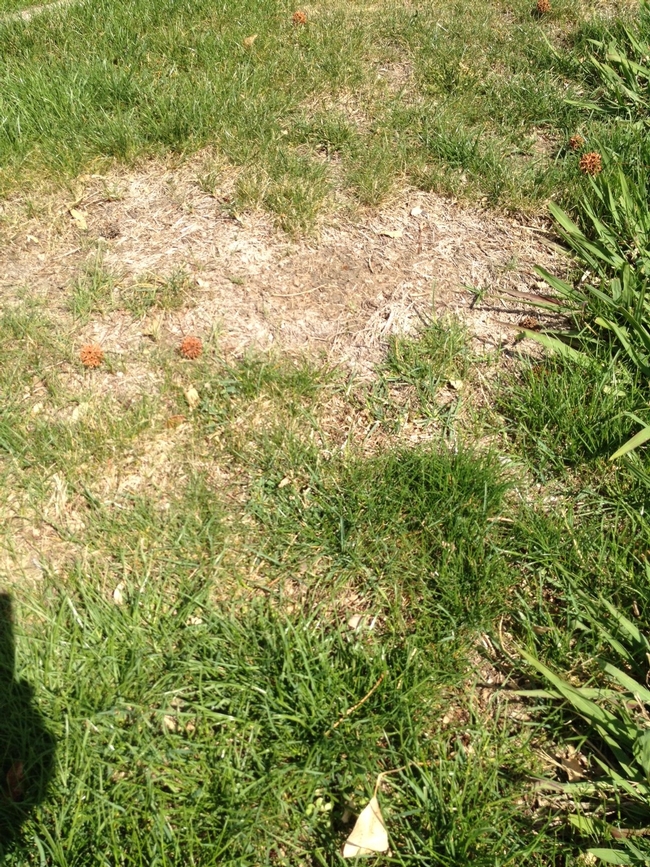
Turf that needs rehab. (photos by Ed Walbolt)
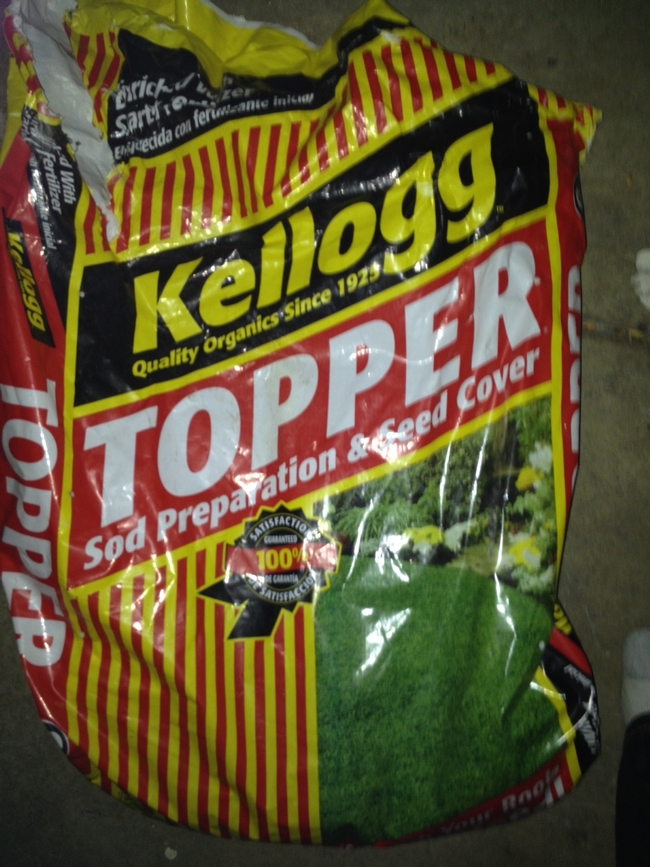
Top soil bag.
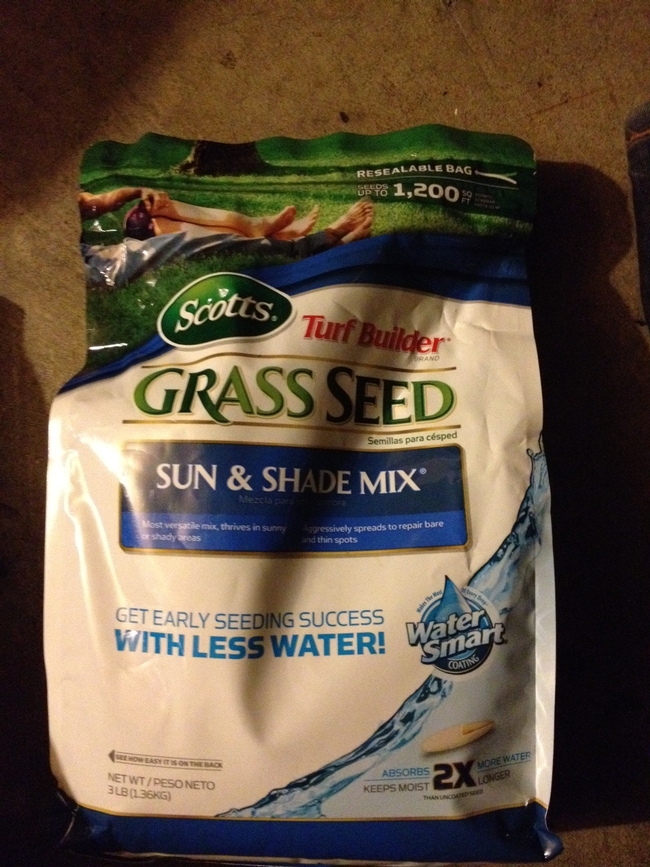
Seed bag.
UC's Tango mandarin touted in Smithsonian
UC Riverside research that resulted in the new, seedless mandarin variety Tango was featured in a Smithsonian magazine article written by Sarah C. Rich.
The story recounts how plant geneticist Mikeal Roose used irradiation on W. Murcott budwood to induce mutations that improve the fruit.
“Farmers have long selected citrus varieties that are low-seed, that have the same kinds of chromosomal rearrangements stimulated by the same thing—there’s natural radiation around all the time and it can affect the trees at any time.”
The advantage of inducing mutations, Roose explained, rather than waiting for the sun to trigger genetic variation, is that it can be targeted toward manipulating one particular feature—a kind of rapid prototyping for agriculture. The radiation accelerates the output of new genetic compositions. Each is then cultivated, screened and tested with the hope that at least one offspring will be reliably superior to its antecedent.
'Doom the Broom' demo is scheduled Thursday in Paradise
Chico Enterprise-Record
A live fire demonstration will help illustrate the need to clear growth from around structures and to be aware of the growth of Scotch, Spanish and French broom Thursday in the parking lot at 5400 Clark Road, Paradise, Calif. Glenn Nader, UC Cooperative Extension advisor for Sutter-Yuba counties, an expert in livestock and natural resources, will talk about spraying herbicides to control the weeds.
The event will go from 10:30-11:45 a.m., rain or shine. The fire demonstration will be at 11:05 a.m.
Tackling a Massive Killer
It's good to see that the UC Davis campus will host its sixth annual World Malaria Day observance. This year's event, set Wednesday, April 25 from 9...
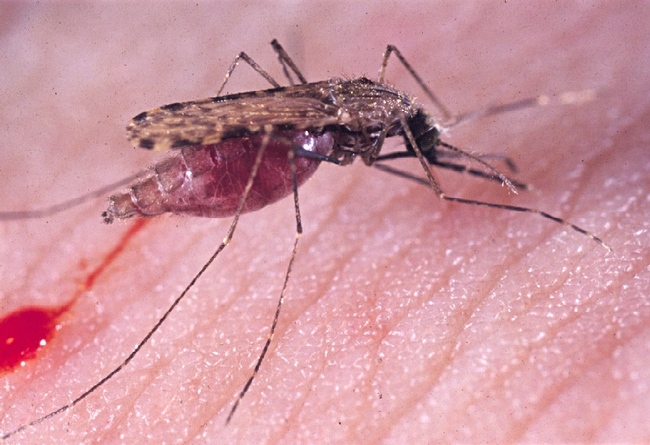
Malaria mosquito, Anopheles gambiae. (Photo by Anthony Cornel)
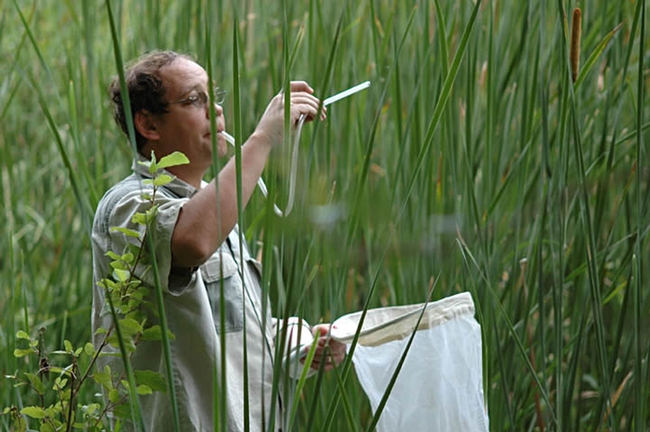
UC Davis medical entomologist Anthony Cornel collecting mosquitoes. (Photo by Rory McAbee)


